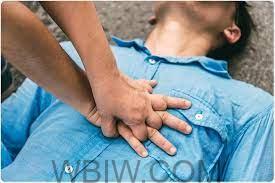
INDIANA — Nine out of 10 people who suffer cardiac arrest outside of the hospital die, and cardiopulmonary resuscitation (CPR), especially if performed immediately, can double or triple survival rates.

That is why the American Heart Association, celebrating 100 years of lifesaving service, encourages at least one person in every Indiana household to learn CPR.
June 1-7 marks National CPR and Automated External Defibrillator (AED) Awareness Week, raising awareness about the tools people can use to save the life of someone suffering sudden cardiac arrest.

“A recent survey showed that less than half of respondents would feel confident performing either CPR or Hands-Only CPR in the event of an emergency,” said Dr. William Gill, a cardiologist who serves as president of the American Heart Association’s board of directors in Indianapolis. “The goal of this year’s CPR Week campaign is to generate awareness about the lifesaving skills of CPR, increase confidence and competence for those who have already learned CPR, and increase their willingness to act in an emergency.”
Joining the Nation of Lifesavers is easier than ever, and many learning options are available to families.
In Indiana, families can:
- Take an online CPR course
- Learn and practice with a CPR Anytime® Training Kit
- Watch a 60-second video to learn Hands-Only CPR
- Find a Heartsaver™ certification course near them
The American Heart Association has set a goal of doubling the survival of cardiac arrest by 2030.
“We know that to save more lives from the 350,000 cardiac arrests that occur outside of the hospital every year, we must increase the number of people who respond to cardiac arrest by calling 911, delivering high-quality CPR, and getting and using an AED as soon as it is available,” Gill said.
For more than six decades, the American Heart Association has led the way as the global leader in resuscitation science, education, and training and as the official publisher of the guidelines for CPR. Through the Nation of Lifesavers initiative, the Association is committed to turning a nation of bystanders into lifesavers. The multi-year initiative supports CPR education, extends AED use, and engages employers, policymakers, philanthropists, and others to increase the chain of survival. The long-term goal is to ensure that in the face of a cardiac emergency, everyone, everywhere, is prepared and empowered to perform CPR.







.png)











